SIGGRAPH 1999: technOasis
Chair(s):
- Marla Schweppe
-
- Rochester Institute of Technology
- Northwestern University
- School of the Art Institute of Chicago
- The Ohio State University
Art Show Administrator(s):
- Margaret Thompson
-
- Rochester Institute of Technology
Location:
Los Angeles, California, United States of America
Dates:
August 8th-13th, 1999
Art Show Overview:
The SIGGRAPH 99 Art Gallery: technOasis presents 100+ artworks including digital paintings, drawings, photographs, sculpture, installations, Web-based projects, animations, and site-specific works. For the first time, experienced docents guide tours through the gallery providing insights into the artists’ visions and methods. In gallery talks throughout the week, the artists themselves offer further insight and opportunities for direct interaction with attendees.
The concepts of this years’ installations integrate well into the technOasis, with elements like water, sand, and light. Participants interact with each other, with digital beings, and with objects via intriguing means: movement through space, the pulse, a net, the placement of a cup on the table. A silver ball slowly draws patterns in the sand. Approach some “paintings,” and you will be transported into another world.
SIGGRAPH 98 initiated ARTsite for Web-based artwork: new forms of artistic expression that wrap around and extend beyond the Web. This year’s site is available remotely via the Internet before, during, and after the conference, online in the Art Gallery and the Creative Applications Lab during the conference. Some of the works utilize features unique to the Web to create a sense of community, connectivity, and interactivity. In some, the method of exploration applies chance and disorientation to parallel the content. Some have powerful imagery, concepts, sound, and structure, and clever writing. All are strong examples of electronic art delivered on the Web.
Each artist takes a unique approach to generating two-dimensional artwork digitally. The show includes digitally inspired painting, collages, algorithmically generated image components, images created with X-rays, in 3D software, with “digital” lights or produced on a plotter. The variety is tantalizing.
Artists’ imaginations run wild with creativity. As an audience, we experience the variety of experiments performed by these artists to communicate ideas. The questions to ask as you experience technOasis are:
What idea, thought, or vision is the artist communicating to me?
Do I understand or am I confused?
If you attend the conference, enjoy the work and the space in the first person. If you are looking at this catalog after the event, imagine the opportunity to experience the creative energy of over 100 artists working with digital technology in the last year of the century. Reflect on the incredible developments in the digital art world in the past 50 years.
All of us on the Art Gallery: technOasis Committee invite you to explore these questions and their answers during and after SIGGRAPH 99. We have enjoyed working with the artists who raise them, and with each other, to present technOasis to the international computer graphic community.
Committee(s):
- Nancy Ciolek
-
- Rochester Institute of Technology
- Dena Elisabeth Eber
-
- Bowling Green State University
- David Kiehl
-
- Whitney Museum of American Art
- Deanna Morse
-
- Grand Valley State University
- Sharon Uhl
-
- Rochester Institute of Technology
- Annette Barbier
- Stephen Jacobs
- Heidi Mau
-
- Temple University
- Deanna Morse
-
- Grand Valley State University
- Kenneth O’Connell
- Lucy Petrovich
-
- The University of Texas at Dallas
- Savannah College of Art and Design
- Kim White
-
- Sierra On-Line
- Lynn Pocock
-
- Pratt Institute
- New York Institute of Technology (NYIT)
- Stephanie Bacon
- Claudia Cumbie-Jones
- Karen Sullivan
-
- Ringling School of Art and Design
- Margaret Dolinsky
- Radhika Gajjala
- Charles Garoian
- Jean M. Ippolito
-
- Savannah College of Art and Design
- University of Hawaii at Hilo
- Katherine Marmor
- Anna C. Martin
- Cynthia Beth Rubin
-
- Rhode Island School of Design
- C B Rubin Studio
General Committee:
Website:
https://www.siggraph.org/artdesign/gallery/S99/big/index.html
Exhibition Artworks:
-
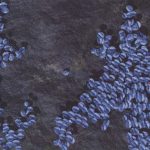
98.13
[Kenneth A. Huff]
Categories: [2D & Wall-Hung] -
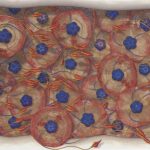
98.3
[Kenneth A. Huff]
Categories: [2D & Wall-Hung] -
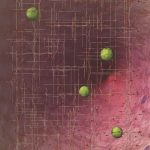
98.4
[Kenneth A. Huff]
Categories: [2D & Wall-Hung] -
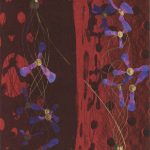
98.9
[Kenneth A. Huff]
Categories: [2D & Wall-Hung] -
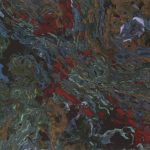
All In Your Mind
[Kevin Mack]
Categories: [2D & Wall-Hung] -
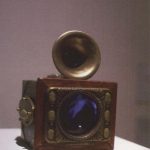
Argus Portable Televisor, 1898 British
[Steve Gompf]
Categories: [3D & Sculpture] -

Art of Survival
[Cassidy Curtis]
Categories: [Animation & Video] -
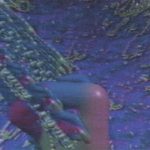
Artificial Life Trip
[Yoichiro Kawaguchi]
Categories: [Animation & Video] -
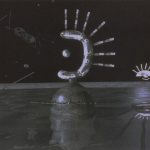
Baja: Listening to the Desert
[mister_ah]
Categories: [2D & Wall-Hung] -

Betty's Barn Cow
[Susan Goldsmith]
Categories: [2D & Wall-Hung] -
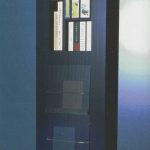
Bookshelf Communication
[Hiromi Michiyori]
Categories: [Interactive & Monitor-Based] -
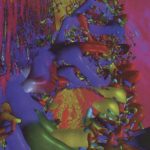
Cellular GROWTH: Brillia
[Yoichiro Kawaguchi]
Categories: [Animation & Video] -
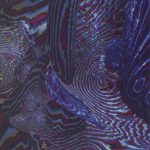
Cellular GROWTH: Fossy
[Yoichiro Kawaguchi]
Categories: [Animation & Video] -
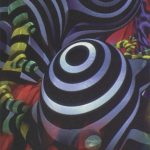
Cellular GROWTH: Wriggon
[Yoichiro Kawaguchi]
Categories: [Animation & Video] -
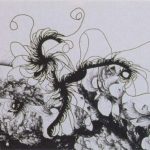
Chaos Revenge
[Mauro Annunziato]
Categories: [2D & Wall-Hung] -
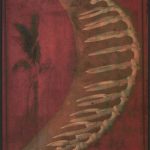
Civilization of Fruit: Evolved Banana
[Patricia Swain]
Categories: [2D & Wall-Hung] -
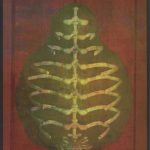
Civilization of Fruit: Evolved Pear
[Patricia Swain]
Categories: [2D & Wall-Hung] -

Civilization of Fruit: Martyred Apple
[Patricia Swain]
Categories: [2D & Wall-Hung] -
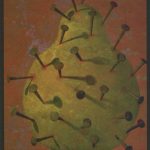
Civilization of Fruit: Sacrificial Pear
[Patricia Swain]
Categories: [2D & Wall-Hung] -
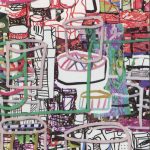
Colour and Drawing: From a Garden Table
[James Faure Walker]
Categories: [2D & Wall-Hung] -
![Composition on the Table No.1 [PUSH], No.2 [TWIST], No.3 [TURN], No.4 [SLIDE]](https://digitalartarchive.siggraph.org/wp-content/uploads/2018/01/1999_Iwai_CompositionontheTable-150x150.jpg)
Composition on the Table No.1 [PUSH], No...
[Toshio Iwai]
Categories: [Electronic/Robotic Object] [Installation] -
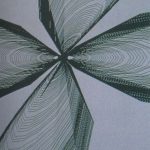
Computational Expressionism
[Joanna Maria Berzowska]
Categories: [Internet Art] -
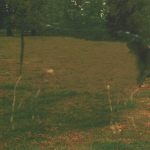
Cow for Drew
[Susan Goldsmith]
Categories: [2D & Wall-Hung] -
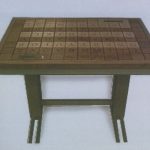
CrossTalk
[Justine Cassell] [Sola Grantham]
Categories: [3D & Sculpture] -
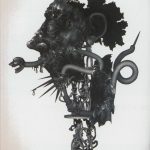
Dark Monarch Lingering Shroud
[Andrew Polk]
Categories: [2D & Wall-Hung] -
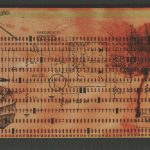
Direct Feed
[Peter Patchen]
Categories: [2D & Wall-Hung] -
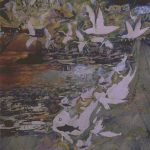
Discretion Advised
[Ana Z. Ursyn]
Categories: [2D & Wall-Hung] -
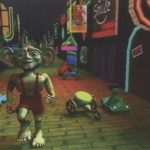
Don't Pull the Plug!
[Wobbe F. Koning]
Categories: [Animation & Video] -
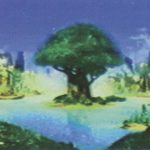
Elytre
[Bruno Follett]
Categories: [Animation & Video] -
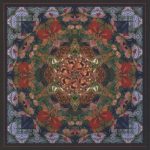
Fava Milagro
[Anna Maria Chupa]
Categories: [2D & Wall-Hung] -
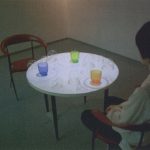
Fisherman's Café
[Kaeko Murata] [Eiji Yamauchi]
Categories: [Installation] [Interactive & Monitor-Based] -

Floating 1
[Mark Marcin]
Categories: [2D & Wall-Hung] -
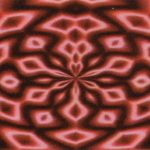
Gaia
[Santi Fort]
Categories: [Animation & Video] -
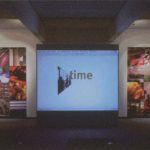
Ghost City
[Jody Zellen]
Categories: [Internet Art] -
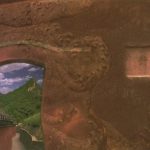
Harmony Wall
[Anne-Marie Rosser]
Categories: [2D & Wall-Hung] -
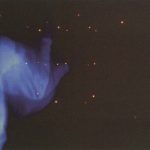
Hyperscratch 9.0
[Haruo Ishii]
Categories: [Installation] [Interactive & Monitor-Based] -

Inbetween 1
[Mark Marcin]
Categories: [2D & Wall-Hung] -
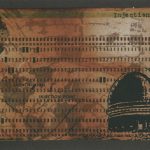
Injection Point
[Peter Patchen]
Categories: [2D & Wall-Hung] -
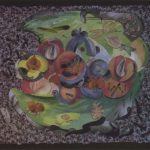
Ins and Outs
[Linda Majzner]
Categories: [2D & Wall-Hung] -
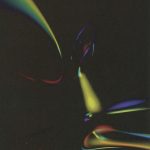
Inside Light
[Harvey Goldman]
Categories: [2D & Wall-Hung] -
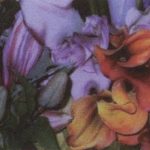
Intersections #1
[Thomas Porett]
Categories: [2D & Wall-Hung] -

It's All About the Nose
[Christos Demosthenous]
Categories: [Animation & Video] -
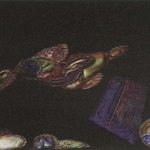
Junk Food
[Mark Knox]
Categories: [Animation & Video] -
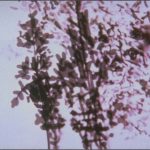
Ladder in the Trees
[Mary Ciani]
Categories: [2D & Wall-Hung] -
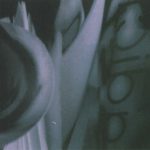
Language/Text Series - #3-7238
[Gloria DeFilipps Brush]
Categories: [2D & Wall-Hung] -

Language/Text Series - #6-7278
[Gloria DeFilipps Brush]
Categories: [2D & Wall-Hung] -
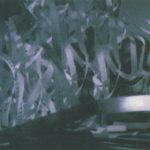
Language/Text Series - #9-7329
[Gloria DeFilipps Brush]
Categories: [2D & Wall-Hung] -

Letters
[Caroline Grosser] [Thomas Haegele]
Categories: [Animation & Video] -
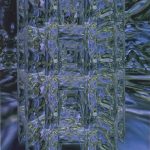
Liquid Meditation
[Margaret Watson]
Categories: [Augmented Reality/Virtual Reality] -
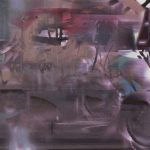
Looking
[Penny Feuerstein]
Categories: [2D & Wall-Hung] -
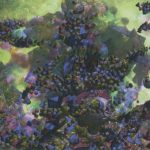
Lost Connection
[Jun Kurumisawa]
Categories: [2D & Wall-Hung] -

Manxmas
[Robert Frick]
Categories: [2D & Wall-Hung] -

Mary's Helpers
[Anna Maria Chupa]
Categories: [2D & Wall-Hung] -

Miniature Televisor, American, 1911
[Steve Gompf]
Categories: [3D & Sculpture] -
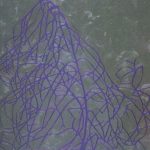
Mother
[Midori Kitagawa De Leon]
Categories: [2D & Wall-Hung] -
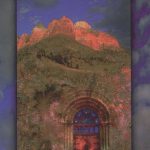
Mountain Portal
[John S. Banks]
Categories: [2D & Wall-Hung] -
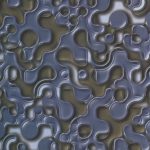
My Gasket
[Paul Brown]
Categories: [2D & Wall-Hung] -
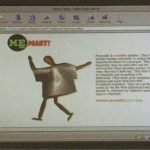
My MeMart
[Madge Gleeson]
Categories: [Internet Art] -
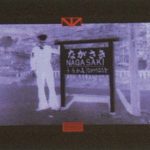
Nagasaki
[Marilyn Waligore]
Categories: [Internet Art] -

Non-Material Construction #1
[Jun Kurumisawa]
Categories: [2D & Wall-Hung] -

Object Lesson
[Kyle Hanson] [Dylan Sisson]
Categories: [Animation & Video] -

PLAY-Lets
[Conor McGarrigle]
Categories: [Internet Art] -

Prima Materia
[Timothy Weaver]
Categories: [Internet Art] -
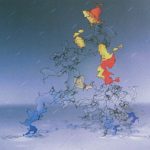
Puddle Jumpers
[Daniel Despain]
Categories: [2D & Wall-Hung] -
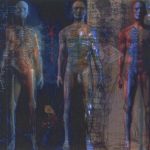
RE-constructing EVE
[Xavier Roca]
Categories: [2D & Wall-Hung] -
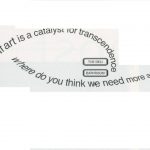
S U T U R E
[Adam Chapman]
Categories: [Internet Art] -

Sampling Broadway
[Annette Weintraub]
Categories: [Internet Art] -

Sisyphus and Ulysses
[Denny Bollay] [David Bothman]
Categories: [3D & Sculpture] -
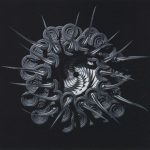
Spines
[Gary Day]
Categories: [2D & Wall-Hung] -
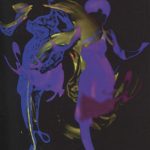
Spirits Reborn
[Francine Bonair]
Categories: [2D & Wall-Hung] -
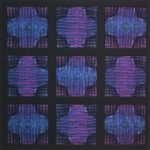
SPT901
[Hiroko Uchiyama]
Categories: [2D & Wall-Hung] -

Study for DNA, Pale Hues
[Jean-Pierre Hébert]
Categories: [2D & Wall-Hung] -
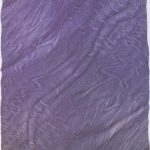
Study for DNA, Payne's Gray
[Jean-Pierre Hébert]
Categories: [2D & Wall-Hung] -
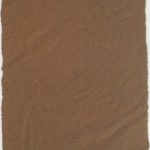
Study for DNA, Red
[Jean-Pierre Hébert]
Categories: [2D & Wall-Hung] -
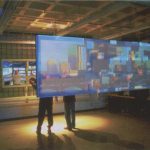
Suspended Window
[Bill Keays] [Jay Lee]
Categories: [Installation] [Interactive & Monitor-Based] -
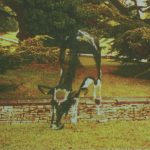
Talbot's Cow
[Susan Goldsmith]
Categories: [2D & Wall-Hung] -
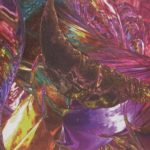
Tangled
[Masa Inakage]
Categories: [2D & Wall-Hung] -
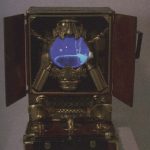
Televisor 1892, Italian
[Steve Gompf]
Categories: [3D & Sculpture] -
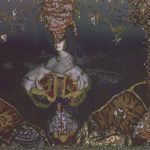
The Assumption of Pleasure
[Anna Ullrich]
Categories: [2D & Wall-Hung] -
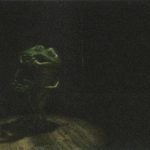
The Audition
[Derek Flood] [Das Werk]
Categories: [Animation & Video] -

The Book of Hours
[Aliyah Marr]
Categories: [Interactive & Monitor-Based] -
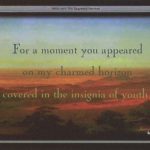
The Charmed Horizon
[Kim Stringfellow]
Categories: [Internet Art] -
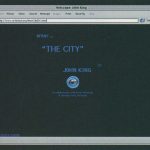
The City
[Dorothy M. Gordon] [John King]
Categories: [Internet Art] -

The Dance
[Joyce Hertzson]
Categories: [2D & Wall-Hung] -
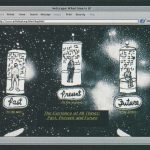
The Existence of All Things, Past, Prese...
[Charles Beinhoff] [Dorothy M. Gordon]
Categories: [Internet Art] -

The Giftbringer
[Michael Makara]
Categories: [Animation & Video] -
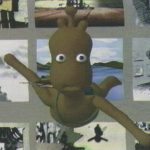
The Jungle Boy
[Ming-Huei Shih]
Categories: [Animation & Video] -
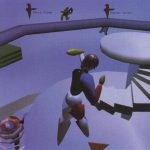
The OrDoll
[Makoto Satoh]
Categories: [Interactive & Monitor-Based] -
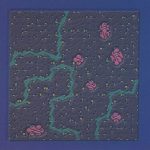
The Recordatori Series: Prairie
[Paul Hertz]
Categories: [2D & Wall-Hung] -
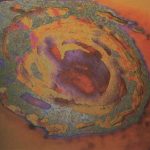
The Space Field Series: Comet Nebula
[Victor Raphael]
Categories: [2D & Wall-Hung] -
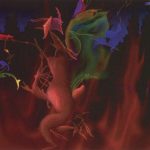
The Twilight Dance
[Daniel Despain]
Categories: [2D & Wall-Hung] -
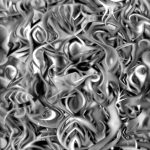
Tortuosity #13
[Sheriann Ki-Sun Burnham]
Categories: [2D & Wall-Hung] -
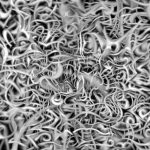
Tortuosity: #9
[Sheriann Ki-Sun Burnham]
Categories: [2D & Wall-Hung] -
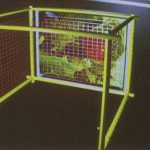
Tracking the Net
[Yesi Maharaj Singh]
Categories: [Installation] [Interactive & Monitor-Based] -

Travels Towards
[Diane Caney] [Robin Petterd]
Categories: [Internet Art] -

Tree Fix
[Michele Turre]
Categories: [Internet Art] -

Trnava Synagogue
[Cynthia Beth Rubin]
Categories: [2D & Wall-Hung] -
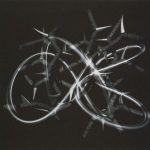
Twigs
[Gary Day]
Categories: [2D & Wall-Hung] -
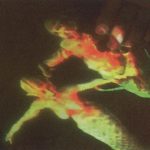
Unconscious Flow
[Naoko Tosa]
Categories: [Installation] [Interactive & Monitor-Based] -

Valley
[Sheriann Ki-Sun Burnham]
Categories: [3D & Sculpture] -
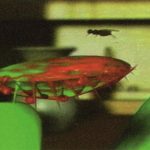
Venus Pie Trap
[Daniel Lazarow]
Categories: [Animation & Video] -
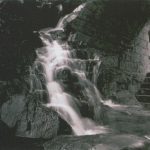
Waterfall Portal
[John S. Banks]
Categories: [2D & Wall-Hung] -
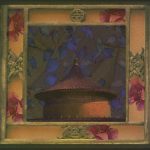
Window Series/Temple of Heaven
[Anne-Marie Rosser]
Categories: [2D & Wall-Hung] -
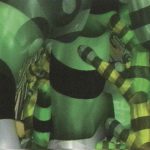
Wriggon
[Yoichiro Kawaguchi]
Categories: [Animation & Video]
1
2
Next ›
Last »
Exhibition Writings and Presentations:
-
Title:
Hypermedia, Eternal Life, and the Impermanence Agent
Author(s):
Category: Essay
Abstract Summary:
We look to media as memory, and a place to memorialize, when we have lost.
Hypermedia pioneers envisioned the ultimate media within the ultimate archive, with each element in continual (versioned) flux and constant new additions – dynamism without loss.
Instead we have the Web, where “Not Found” is a daily message. Projects such as the Internet Archive and Afterlife dream of fixing this uncomfortable impermanence. Marketers, instead, promise agents that will make the Web comfortable through filtering (hiding the impermanence and overwhelming profusion that its dynamism engenders).
The Impermanence Agent operates differently. It begins by telling my stories – my grandmother’s stories – and as users browse, the images and texts they pull from the Web are interwoven with her stories. In time, the original stories are lost. New stories, collaboratively created, have taken their place.
[View PDF]Title: INTERACTIVITY AND RITUAL: Body Dialogues with Artificial Systems
Author(s):
Category: Essay
Abstract Summary:
Digital technologies provide dialogues with artificial systems, allowing acquisition and communication of biological signals with electronic databases. As interfaces and computers capture, manage, and transform signals, they generate new forms of life. In my latest interactive installations, bodies repeat behaviours, simulating a sort of ritual or ceremony with responses in real time. Stored data managed by neural networks offer states of unpredictability, and the adaptive capacity system determines the emergence of a “living environment” in self-regeneration. The variables place us within elliptical zones and build up present times in which the actions of the amalgamated body with complex systems enable exchanges in cyberspace. In a psychic and physical exploration of the environment, mixing natural/artificial, analogic/digital, real/virtual, we experience consciousness propagations and think, dream, and understand our human condition enhanced by technologies.
[View PDF]Title: Virtual Imaginations Require Real Bodies
Author(s):
Category: Essay
Abstract Summary:
Virtual reality (VR) works of art conjure up ideas such as virtual sex, virtual frontiers, and to some, disembodiment. Those who uphold the notion of disembodiment claim that works of art that embrace VR technology necessarily encourage a state that affirms the Cartesian duality in which people can leave Earth, nature, and body behind. I counter this notion because I do not believe that the mind can be separated from the body; rather, the two are inexplicably intertwined.
Although this “Gibsonesque” scenario is rich with metaphors and metaphysical implications, I suggest that any virtual space is an embodied experience because the imagination of the artist and the viewer refer back to the body, to nature, and to the Earth. From the physical reality of Earth and our bodies, we may understand and perceive many more realities, perhaps facilitated by virtual space art installations. In fact, I maintain that even the virtual is real. It is a perception that is a real experience, which makes reference to our encounters with the physical world and our flesh.
[View PDF]



